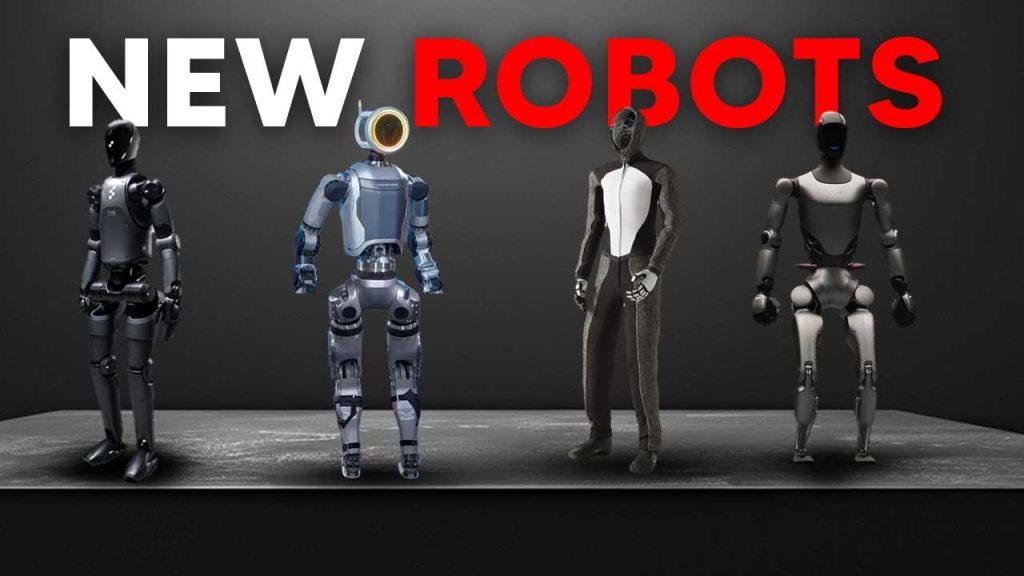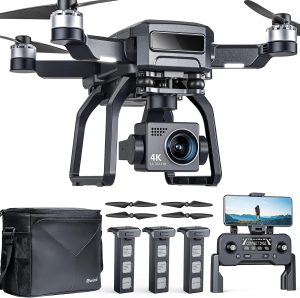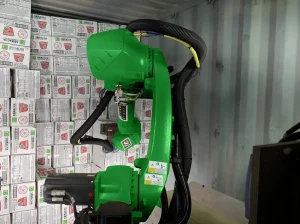Humanoid Robots The Future is Now

The field of humanoid robotics is advancing at a mind-blowing pace. Innovative designs and cutting-edge technology are pushing the boundaries of what robots can achieve.
This article delves into the latest advancements in humanoid robotics, highlighting key features, technological advancements, and future potential.
Figure 2 Robot: A Leap Forward
The Figure 2 robot, developed by Figure AI, represents a significant leap in humanoid robotic technology. With a sleek design and advanced capabilities, it stands out in the field.
Technological Advancements
Figure 2 incorporates NVIDIA’s Omniverse and GPU technologies, enhancing its AI capabilities. The second NVIDIA RTX GPU module offers three times the performance of its predecessor.
Battery and Power
The Figure 2’s battery capacity is 50% larger than the previous model, enabling longer operation times. The battery is integrated into the torso for better balance and movement.
This integration optimizes the robot’s center of mass, enhancing agility and movement efficiency in various environments.
AI and Interaction
Developed in partnership with OpenAI, Figure 2 boasts advanced conversational abilities. It uses custom AI models to enhance interaction.
With six RGB cameras, it excels in visual perception, handling tasks like obstacle avoidance and hand-eye coordination seamlessly.
Industrial Applications
Figure 2 has been tested in industrial settings like BMW’s Spartanburg production line. It excels in tasks requiring precision and dexterity.
Figure AI aims to deploy Figure 2 across various industries, addressing labor shortages and boosting productivity in manufacturing, logistics, and retail sectors.
GR2: Emotional Intelligence
Developed by Forier Intelligence, the GR2 robot is a significant evolution from its predecessor, GR1. It focuses on enhancing human-robot interaction with advanced AI and emotional intelligence.
The GR2 can detect and respond to human emotions, making interactions feel more natural and comfortable.
Advanced Navigation
The GR2 features a camera-based vision system with six RGB cameras for a 360-degree view. This system ensures safe and accurate navigation in complex environments.
The improved dexterity and teleoperation capabilities make it adaptable for both household and industrial settings.
1X Neo: Humanlike Dexterity
The 1X Neo robot, developed by 1X Technologies, is designed for domestic use. It combines humanlike dexterity with intelligence to perform household tasks efficiently.
Neo’s bio-inspired design uses actuators that mimic human muscles, providing smooth and natural movements.
Intelligent Learning
Using embodied learning, Neo continuously improves its skills from its surroundings. This makes it highly adaptable to various tasks.
It stands at 165 cm tall, weighs 30 kg, and can walk up to 4 km per hour, even running up to 12 km per hour.
Safety First
Safety is a priority for Neo, featuring soft construction and padded areas. This makes it safe for interactions with children and pets.
Currently in the beta phase, limited units are deployed for research and development. Broader release plans are underway.
Boston Dynamics’ Atlas: Electric Evolution
Boston Dynamics has shifted from hydraulic models to a fully electric design with its new Atlas robot. This makes it lighter, more compact, and quieter.
The electric Atlas offers enhanced strength and dexterity, with advanced motion capabilities surpassing human limitations.
Real-World Applications
Boston Dynamics envisions Atlas being used in industrial settings like automotive manufacturing. Its ability to handle dangerous, dull, or dirty tasks makes it invaluable.
Equipped with advanced control systems and sensors, Atlas navigates unstructured environments dynamically and efficiently.
Astrobot S1: Speed and Precision
Developed by Stardust Intelligence, the Astrobot S1 excels in speed and precision, mimicking human actions closely.
It can move at speeds up to 10 m/s and handle 10 kg per arm, showcasing its remarkable dexterity and efficiency.
Advanced AI Integration
The S1 incorporates a large language model for intelligent interaction and real-time situation handling.
Its ability to perform household tasks like cooking and cleaning makes it highly versatile.
4NE1: Versatile Assistance
The 4NE1 robot by Neura Robotics is designed for both domestic and professional settings. It offers advanced cognitive abilities and adaptability.
It can carry loads up to 15 kg and recognize objects, environments, and gestures, making it suitable for various tasks.
Intuitive Interaction and Safety
The 4NE1 features voice and gesture control powered by the Neura AI API, ensuring intuitive interaction.
Its touchless human detection sensor ensures safe interactions, even when its view is obstructed.
Tesla Bot Gen 2: Optimus
The Tesla Bot Gen 2, also known as Optimus, is lighter and faster than its predecessor. It offers improved balance and full-body control for greater mobility.
Equipped with advanced sensors and actuators, Optimus excels in precision and tactile sensing.
Future Prospects
Tesla plans to produce millions of these robots to meet industrial demands. The Gen 3 version is expected to feature speakers and a voice system.
Elon Musk believes Optimus could have a greater impact on Tesla’s market value than its automotive business.
The rapid advancements in humanoid robotics are opening new frontiers in various industries.
From household assistance to industrial automation, these robots are set to transform the way we live and work.








